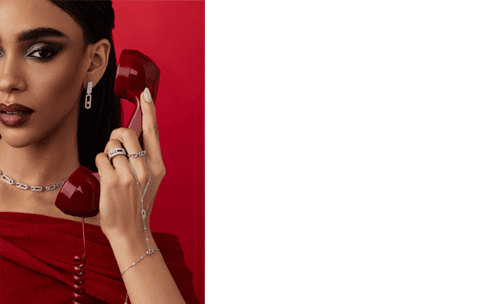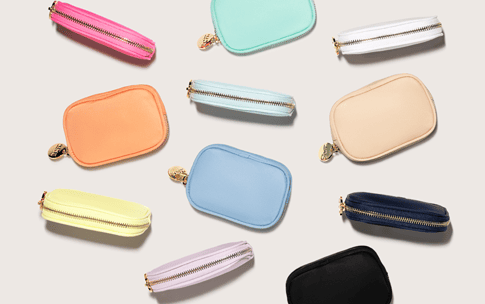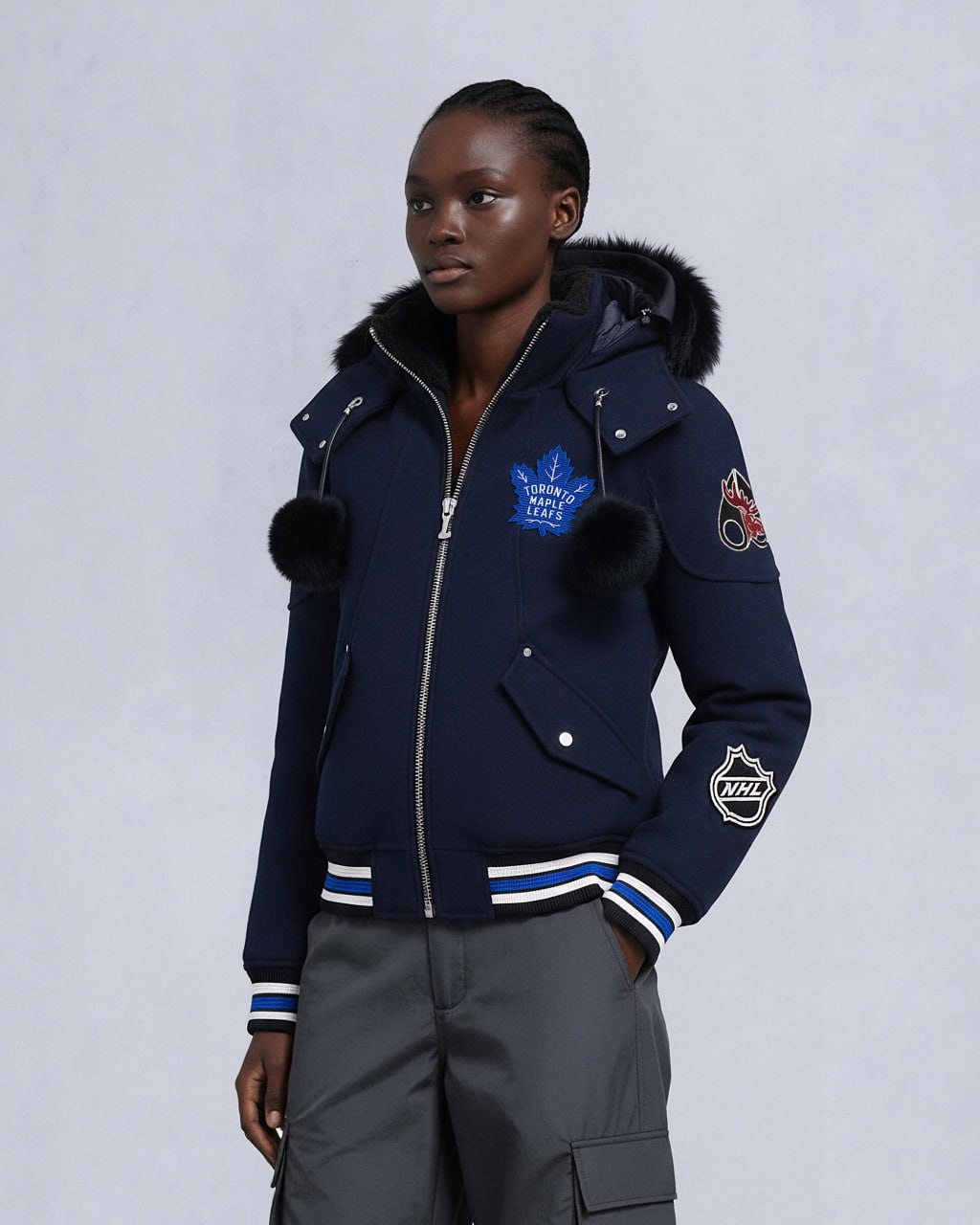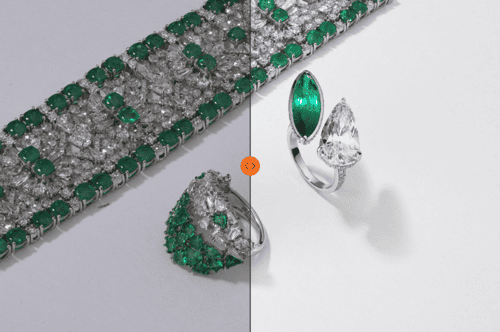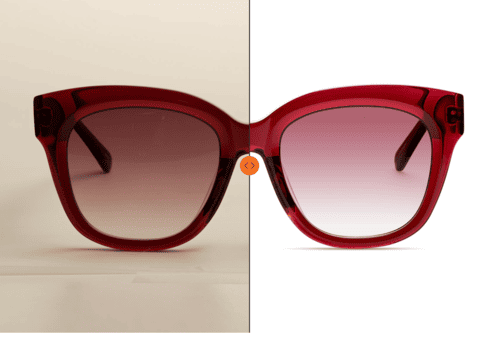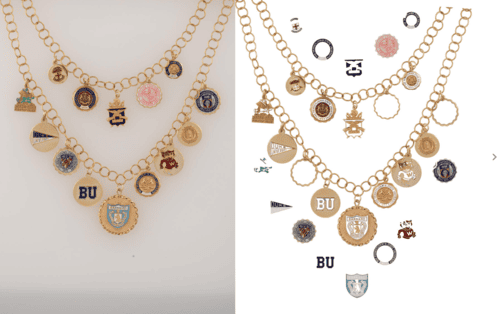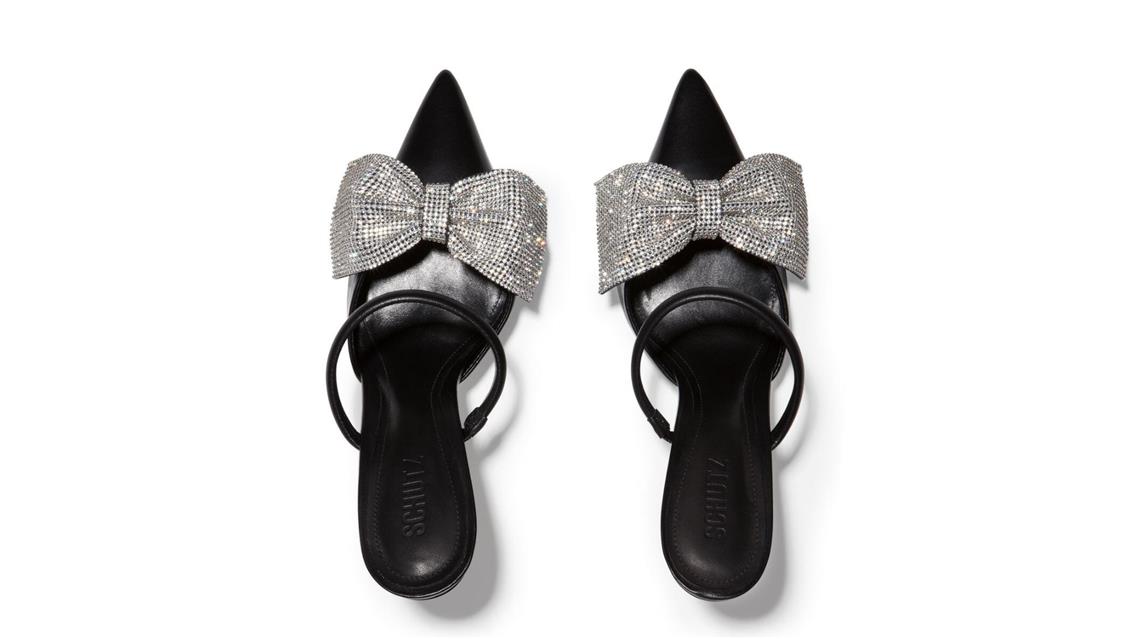Omnichannel Visual Marketing Strategies for eCommerce Brands
Imagine this: your customer’s day begins with a casual scroll on Instagram, where your elegantly styled product photo grabs their attention. Later, they’re exploring Pinterest for outfit inspiration and come across your perfectly curated lookbook. Later, they’re on your website, drawn in by visuals so compelling they can already picture themselves wearing that piece or outfit. Seamless? Yes. Coincidental? Absolutely not.
This is omnichannel marketing at its finest, and visual content is the glue that holds it all together. For jewelry and fashion brands, visuals aren’t just decoration — they’re the silent storytellers of your brand. From the way a ring catches the light in a close-up to the artistry of a styled campaign shot, every image has a role to play in guiding your customer’s journey.
In this article, we’ll explore the power of omnichannel marketing through the lens of visual content. You’ll discover how to craft cohesive, platform-specific visuals that resonate across Instagram, Pinterest, email, and beyond. Because in the world of jewelry and fashion, it’s not just about being seen — it’s about being remembered. Let’s dive in.

Building a Multichannel Visual Content Strategy
Observing Platform-Specific Requirements
Each platform imposes specific guidelines and aesthetics, making it critical to adapt visual assets to meet these demands. Tailoring visuals to platform requirements enhances performance, improves engagement, and aligns with audience expectations. However, it’s not just about resolution and dimensions — understanding the visual culture and trends of each platform is key to achieving visibility and success.
Instagram thrives on aesthetic, lifestyle-focused content that inspires and engages. Bright, visually stunning imagery paired with relatable captions often drives the most engagement. For example, carousel posts allow brands to share multiple angles or tell a story within one post. Instagram balances polished aesthetics with relatable storytelling. It can serve as a comprehensive ecosystem where customers journey from discovery to purchase.
For example, a user might encounter an influencer’s UGC ad for your product, visit your profile Highlights to explore featuring lifestyle imagery with product descriptions, watch a “how-to” reel in your feed about styling, and tap on product images posts to choose between a green and blue dress. Finally, they’ll click through to your website to complete the purchase.
To support this journey, combine professional lifestyle photography, viral mobile content, and even product-focused imagery to provide all the information customers need to make a decision. Remember: consistency between Instagram and your website is critical to avoid confusing potential buyers.
TikTok
Polished aesthetics are less important here. The focus is on grabbing attention quickly and standing out with loud, dynamic, and relatable content. Human-centric videos — such as explanatory tutorials, honest opinions, and behind-the-scenes looks — tend to perform well. The goal is authenticity and entertainment, creating a strong emotional connection with viewers.
Pinterest serves as a visual search engine where vertical, visually inspiring images often act as a gateway to eCommerce websites. Infographics, lifestyle applications of products, and aspirational visuals excel in attracting clicks and shares. Still-life photography, aspirational visuals, and highly curated content thrive on Pinterest. The platform values trends and aesthetics that inspire action — whether it’s planning, pinning, or purchasing. Vertical formats (4:5 or 2:3) with clear messaging and text overlays help maximize visibility.
Marketplaces (Amazon, Etsy, Macy’s)
These platforms demand clarity and professionalism. High-resolution product photos with white backgrounds dominate. Including detailed shots showcasing features, dimensions, and use cases ensures that customers have all the technical information they need. Platforms like Macy’s benefit from more elegant, brand-forward imagery that matches their premium tone.
Own websites (Shopify and others)
A blend of lifestyle and technical product imagery works best. Hero banners featuring lifestyle photos can grab attention, while interactive features such as 360-degree views and zoomable technical shots enhance product exploration. Ensure that product imagery is consistent with visuals on social media to maintain a cohesive experience.
By aligning visual content with platform-specific demands and trends, brands can ensure their assets resonate with their target audience while meeting performance benchmarks.
Adapting Visual Content for Different Channels
Customizing visual assets to suit individual platforms is essential for achieving success in multichannel strategies. Sometimes, adapting resolution and ratio alone can suffice to meet the platform’s technical requirements. However, in many cases, especially when dealing with intricate products like fine jewelry, visuals that work perfectly on your website and social media may be unsuitable for marketplaces.
Major marketplaces like Macy’s, Fred Mayer, Farfetch, Ssence, and Amazon often have stringent specifications where even subtle details, such as the angle of the product or the tint of background, can lead to listing rejection. For example, a background that appears off-white instead of pure white can result in compliance issues. These platforms require precise attention to detail — the wrong perspective of a ring or bracelet might fail to showcase intricate design elements, while inconsistent background colors can clash with marketplace branding standards.
This is why working with an experienced eCommerce visual content partner like LenFlash is invaluable. LenFlash not only understands these intricate requirements but also excels at creating visuals tailored to meet multi-platform demands. Their expertise ensures your products are captured with the perfect angles, lighting, and backgrounds, avoiding costly rejections and maximizing appeal. Professional expertise enables seamless adaptation of your visual content, ensuring it meets the diverse requirements of marketplaces, social media, and websites, all while maintaining brand consistency.
Creating Versatile Visual Assets
To streamline multichannel strategies, brands should focus on versatility:
- High-Resolution Masters: Create master files that can be cropped or resized for different platforms without losing quality.
- Guidelines for Branding and Design: Together with your visual content partner, develop a comprehensive style guide covering photographic and retouching styles to ensure consistency.
- Testing Across Platforms: Test visual assets to confirm they maintain impact and clarity when adapted to various platforms and formats.
Agile Approach to Visual Content Creation
Selling on marketplaces, running social ads, and managing a website requires a lot of visuals. And every platform seems to want something different. Amazon demands clean, on-white backgrounds. Instagram thrives on creativity and personality. Pinterest? Pure aesthetics. Agile imagery is about planning ahead so your photos can tick all those boxes without turning your content creation into a never-ending task. Capture high-resolution master images that can be cropped, resized, and adjusted for varying specifications without losing detail or focus.
But it’s not about shooting once and being done forever — that’s a pipe dream. It is about making your content work harder for you. By creating versatile, high-quality images from the start, you’ll spend less time scrambling for new visuals and more time focusing on selling your products.
And no, it doesn’t mean DIYing your photos with a smartphone will suddenly become enough. To really nail this approach, you need to work with professionals who know how to think ahead. They’ll capture the right angles, lighting, and details so your photos can seamlessly adapt to as many platforms as possible. It’s like getting a wardrobe full of basics that you can mix and match for any occasion.
The real beauty of agile imagery? It saves time, money, and stress in the long run. Sure, the upfront investment might feel like a lot. But think about how many times you’ve needed a quick photo tweak for a new ad, only to realize the original image wasn’t quite right. With agile imagery, you’ll have all the content you need, ready to go.
Best Practices for Omnichannel Visual Marketing
Product Photography for Multichannel Success
High-quality product (or catalog) photography is the foundation of multichannel success. When done right, it not only enhances the aesthetic appeal of your products but also ensures clarity, compliance, and functionality across platforms. Here are strategies to maximize the impact of your product photography:
Lighting and Clarity: The role of lighting goes beyond just illuminating the product. For products like fine jewelry, proper lighting captures the brilliance of gemstones and the texture of metal, ensuring that the images convey quality and craftsmanship.
Multiple Angles: Showcase every angle of your product. Include close-ups of key details, such as the stitching on a handbag or the clasp of a necklace. This ensures customers have a comprehensive understanding of the product, increasing trust and reducing return rates.

Creative cropping: Creative cropping is the ultimate hack for stretching the value of a single photo. It’s like looking at one image and seeing five different ways to use it across your marketing channels. The idea is simple: you take a high-quality, high-resolution photo and crop it strategically to suit specific platforms or purposes. Say you’ve ordered a beautiful lifestyle photo of a handbag. The original image might show the bag styled in an outfit, but with creative cropping, you can get:
- Zoom in on the stitching or hardware to highlight craftsmanship.
- Focus on the logo for a brand-forward Instagram post.
- Crop the handle or clasp as a teaser shot for a carousel.
Suddenly, that one photo becomes a whole collection of assets, each telling a different story about the product.
Open Light Photography: Open light photography strikes a unique balance between clear product presentation and highly aesthetic appeal. Unlike the traditional "on-white" approach often required by marketplaces, open-light photography maintains a clean and professional look while incorporating subtle artistic elements. This makes it highly versatile, and suitable for social media, your website, and even certain marketplaces that are beginning to move away from strict "on-white" requirements.

For instance, marketplaces like Etsy and some categories on Amazon now encourage sellers to use catalog photos that blend creativity with clarity. Open light photography achieves this by utilizing soft, diffuse lighting to highlight intricate product details — like the texture of the fabric or the sparkle of fine jewelry — without losing the polish required for professional listings. Additionally, the method ensures compliance by keeping backgrounds neutral and distraction-free while providing the aesthetic appeal needed for platforms like Instagram or Pinterest, where eye-catching visuals are crucial.
By collaborating with an experienced eCommerce visual content partner like LenFlash, brands can leverage open-light photography to create multi-purpose images that perform across all channels. LenFlash’s expertise ensures that every photo is tailored to meet platform-specific requirements, from showcasing a product’s intricate craftsmanship to aligning with the visual trends and standards of modern eCommerce. You can also read more about catalog photography in our specialized article.
Tips for Social Media eCommerce Visuals
Social media thrives on creativity and connection. While compliance and technical precision are crucial for marketplaces, social platforms prioritize engaging, shareable content that resonates emotionally. Here are ways to excel:
Trending Formats: Experiment with Instagram Reels, TikTok short videos, and carousel posts. Reels and TikToks are perfect for showing behind-the-scenes processes, unboxing experiences, or quick styling tips, while carousel posts allow for a deeper dive into product features or collections (but be sure that images are consistent across the collection).
Lifestyle Storytelling: Use visuals to tell a story that resonates with your target audience. For example, show how a piece of decor transforms a living space or how skincare products enhance a daily routine. Storytelling creates emotional connections and encourages sharing.
UGC (User-Generated Content): Authenticity is a driving force in social media engagement. Feature user-generated content to highlight real-life applications of your product. Not only does this build trust, but it also strengthens your community by showcasing your customers.
Optimizing Product Images for Marketplaces
Marketplaces like Amazon, Etsy, Macy’s, and JCPenney come with strict guidelines that demand precise attention to detail. Optimizing images for these platforms requires both technical knowledge and aesthetic refinement.
Compliance: Understand and adhere to each platform’s specifications for resolution, background color, margins, and file type. Simply hoping your images meet these standards can be risky and expensive. If listings are rejected due to non-compliance, the cost of reshooting content can be significant. Even if your listings are accepted, poorly optimized images often result in lower performance, reducing visibility and conversions. That’s why it is essential to work strictly within marketplace guidelines.
Multiple Angles and Contextual Shots: Customers on marketplaces often rely on visual details to make purchasing decisions. Include a variety of images that showcase the product in different contexts and settings. For example, a jacket should be shown on a model, hung on a rack, and folded to highlight its material.
Identity Across Platforms: Your product images should feel consistent with your brand identity across all marketplaces while adhering to their guidelines. Subtle branding elements, like a consistent retouching style or a particular model’s appearance type, all these things can help maintain professionalism and recognition.
Collaborate with Experienced Providers: Always ask your eCommerce visual content partner about their experience with different marketplaces. Professionals like LenFlash understand the nuances of each platform’s specifications and ensure your images are tailored to meet these demands. This expertise prevents costly mistakes, enhances listing performance, and saves time while delivering visually compelling, high-performing content.
Case Study: Levi’s Example of Multichannel Visual Marketing Strategy
Levi’s excels at their visual marketing strategy. They inspire customers while also showing all the details of their products. This approach ensures that each target group receives the right messaging in the right place: those who make emotional decisions, those who are logical-driven; those who make their decisions fast, and those who need to think twice.
| On Instagram, Levi’s balances fashion editorial shots with relatable user-generated content (UGC) featuring everyday denim outfits, demonstrating how their products integrate into real life. | |
| They effectively repurpose this UGC by incorporating it into their dedicated "Trust Block" section on their website, showcasing authentic customer experiences to build credibility and trust. | |
| On their website, product imagery emphasizes critical details such as stitching, fabric quality, and fit. This comprehensive approach ensures shoppers have all the information they need while staying true to the brand’s authentic and inclusive roots. |
|
The Consequences of Inconsistent and Non-Optimized Visuals
Missed Revenue Opportunities
Poorly optimized visuals fail to convert shoppers on marketplaces and websites. A lack of alignment with platform guidelines can mean your products aren’t displayed properly, deterring potential buyers. eCommerce platforms always prioritize visuals that comply with their technical specifications and aesthetic expectations. Content that deviates from these standards often results in reduced visibility within search rankings, directly impacting revenue.
Damaged Brand Perception
Mismatched visuals confuse customers and erode brand loyalty. For example, using inconsistent imagery across platforms may lead customers to question the authenticity or professionalism of your brand. Inconsistent color schemes, low-quality images, or visuals that do not accurately represent your product can result in negative customer experiences. This not only deters purchases but may also lead to returns and poor reviews.
Increased Costs and Effort
Redoing subpar visuals wastes time and money. If initial content fails to meet marketplace requirements, re-shooting or editing becomes necessary, adding delays to your campaigns and launches. Poorly planned visual strategies can snowball into logistical challenges, including delays in product launches and strained internal resources.
Missed Engagement Potential
Substandard visuals struggle to compete in the visually-driven social media landscape, where customers expect high-quality, engaging content. Platforms like Instagram and TikTok reward compelling visuals with greater visibility. If your content lacks the polish or creativity required to stand out, engagement rates plummet, limiting your reach and long-term growth. Viral opportunities, often born from creative, on-trend visuals, are lost when content fails with platform standards.
Establish and Scale Your Omnichannel Visual Marketing Strategy
As your brand grows, refining your visual strategy becomes critical to maintaining consistency, addressing potential risks, and leveraging new opportunities. A comprehensive approach ensures not only compliance but also optimal performance across platforms, preventing costly mistakes while maximizing results.
With the right visual content partner, you don’t need to juggle the complexities of every platform on your own. Instead, you can develop an adaptable visual strategy that is both cost-effective and quickly scalable. An experienced partner can streamline this process, ensuring visuals align with platform specifications without compromising on quality.
Partnering with a professional agency like LenFlash is essential for multichannel success. Their expertise eliminates guesswork, ensuring visuals are not only compliant with marketplace standards but also optimized for performance. Their targeted approach prevents rejections, reduces the need for costly reshoots, and enhances listing visibility.
A tailored, consistent visual content strategy is the key to thriving in today’s multichannel e-commerce landscape. Partner with LenFlash to create visual content that elevates your brand and drives results on all channels. Order LenFlash Photography and Videography services today to get started!
